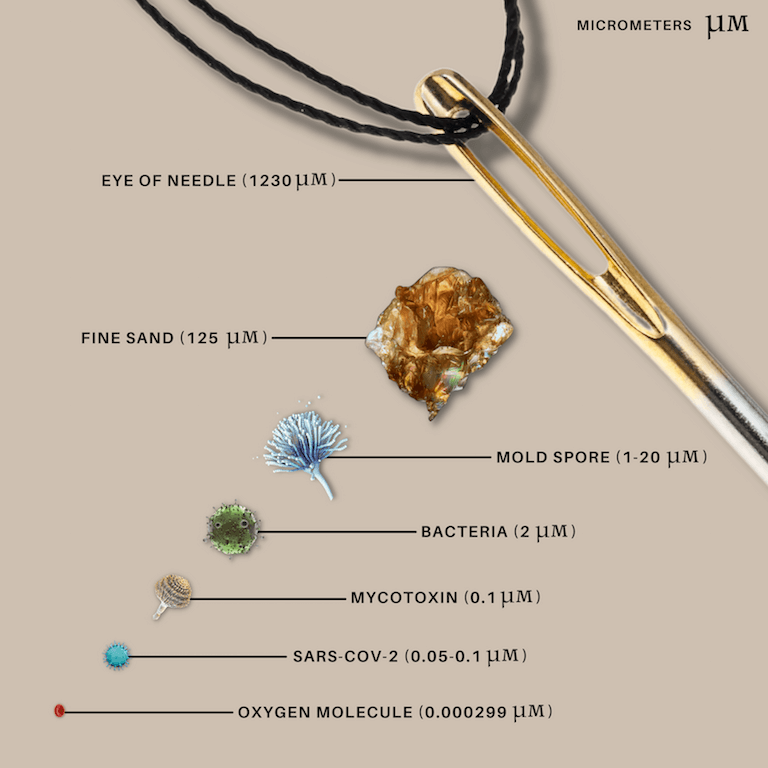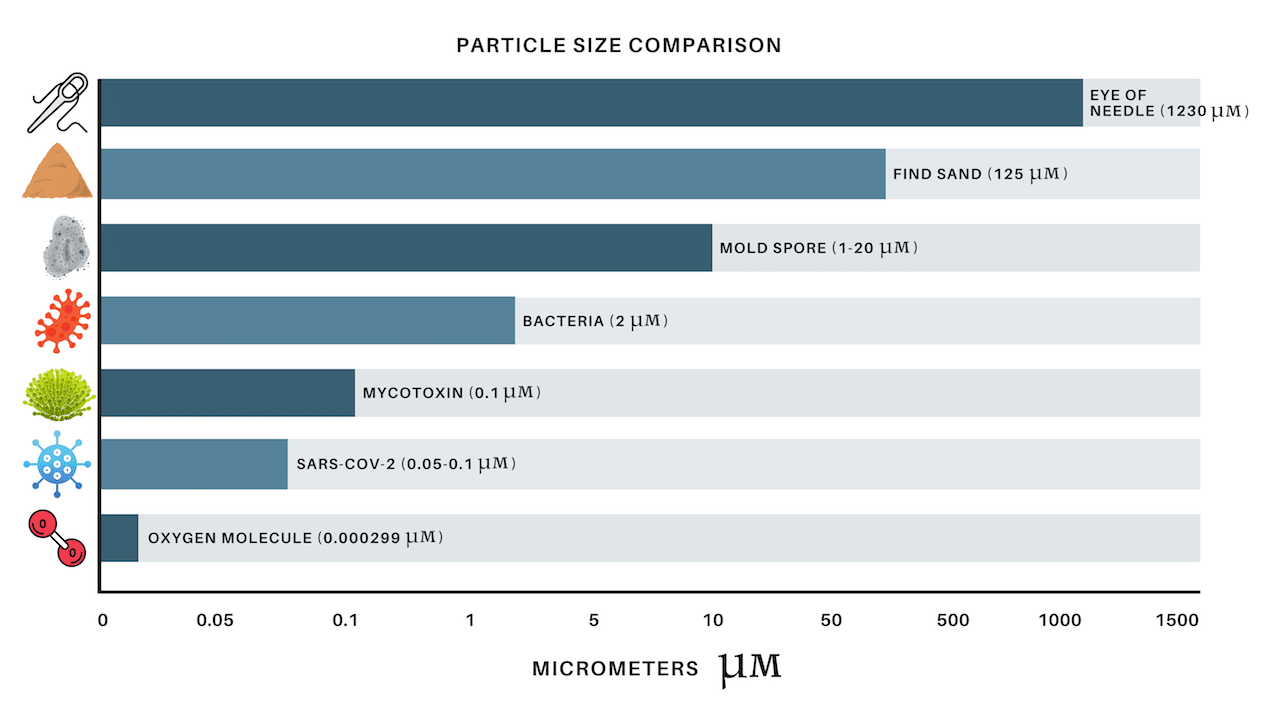No products in the cart.
Size of Mold Spores
by Michael Rubino // November 3
by Michael Rubino // November 3
When it comes to mold, we typically think of those green, brown, and black growing masses that are fuzzy, fluffy, or powdery. Mold exposure doesn’t just extend to this visibly growing organism, though. Before these living colonies begin, they first start out as a non-living particle called a spore. What is the significance of this?
Like the seeds from a dandelion puff, these spores are released into the air by living mold and ride that current wherever that may take them. The key aspect to consider here is that mold spores are microscopic, meaning they are invisible to the naked eye. Not only can these tiny spores be floating in the air unnoticed by those inside a building, but they’re also small enough to make their way straight into our lungs.
Keep in mind that many species of molds can also create and release microscopic toxins, called mycotoxins. These invisible particles are inhalable as well.
When discussing small particles, like mold spores and mycotoxins, scientists typically quantify their size in microns.
A micron is a unit of length equal to one-millionth of a meter or 1/26,000 of an inch and is abbreviated as μm. Most humans can’t see anything smaller than 40 microns in size without the aid of magnification instruments like microscopes.
The eye of a needle, for instance, is 1230 microns. The particles associated with mold growth fall well under that visibility category.
How small is small? Mold spores can range from 1 micron to 40 microns in size. In comparison, the size of a single strand of human hair is approximately 70 microns in diameter. That means that if a mold spore was 10 microns in size, it would take 7 of them stacked together to equal one single strand of hair. On the opposite side of the spectrum, viruses such as Covid-19 can be as small as 0.1-0.5 microns in diameter.


It’s difficult to battle something you can’t see, but not impossible! You just have to know what you’re up against. While you can properly remediate and remove visible mold growth, that’s not the only source of contamination you have to be worried about.
Mold spores are floating in the air circulating throughout the home and are attached to any surfaces they come into contact with.
Mycotoxins could be present in the air and on surfaces if the species of living mold inside the building produce them.
Bacteria (typically 0.2-2 microns in size) might also be in the home or public building depending on the source of the water event.
Proper remediation protocols will include visible mold growth while also taking care of the invisible particles attached to surfaces and floating throughout the air. Otherwise, exposure will continue to those inside the building.
Mycotoxins and bacteria cannot be remediated in the same way as mold and mold spores, so make sure you’re up-to-date on cleaning protocols that will work.
Air purifiers and system filters should be equipped to remove these tiny, invisible particles. The smaller the particles it can effectively remove from your indoor air, the better the air quality will be. Knowing the size of these particles can help you choose a system that will actively work to cleanse the air, and won’t leave contaminants behind that could affect your health.
For public buildings and spaces, purifiers and filters can also remove particles as small as viruses to help create even safer indoor spaces
These particles aren’t just invisible. They have the ability to make their way into our lungs through inhalation. Typically, breathing in a few spores or mycotoxins isn’t a problem. Indoor mold growth leads to a high level of foreign airborne particles that we breathe in every day. Consider that the average person breathes in 20,000 breaths a day on average, and it’s clear to see how easily this can impact your health.
Some particles are so small that they can even make it into the bloodstream, potentially causing further adverse health reactions.
From the National Institute of Health:
A member of our team is here to help! Click on “Get Started ➤” below to book a consultation with a member of the HOMECLEANSE team. We have a few quick questions that will help us put together a roadmap to solve or prevent all of your mold problems.
Two minutes of your time could lead to better health for you and your family.